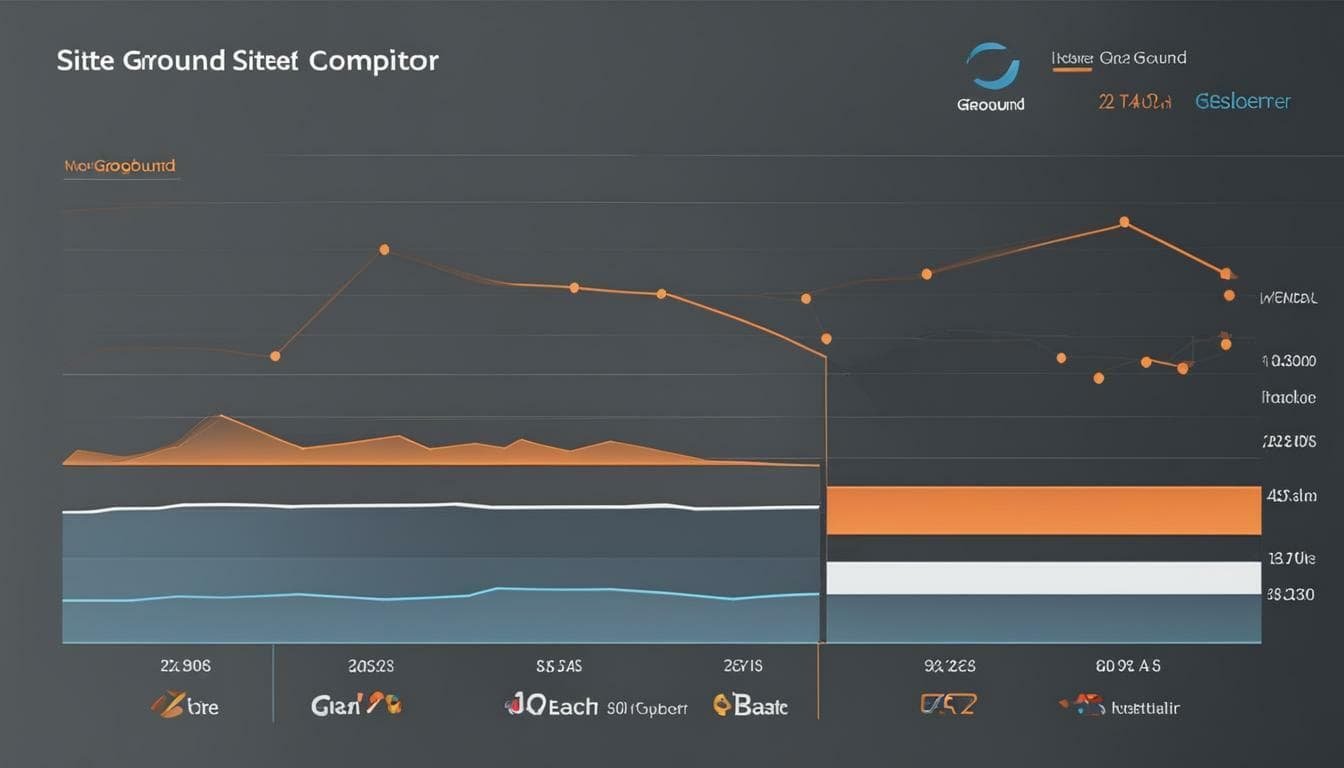Gaining knowledge about the development process behind hacking tools can provide valuable insights into the world of cybersecurity. In this article, I will explore the steps involved in creating hacking software, building hacking programs, and coding hacking tools from scratch. Whether you are curious about the DIY hacking movement or interested in understanding the programming behind hacking software, this article will shed light on the fascinating process of making hacking tools.
Key Takeaways:
- Understanding the development process behind hacking tools is crucial in the cybersecurity field.
- Creating hacking software involves building programs and coding tools from scratch.
- DIY hacking has gained popularity as individuals explore the world of ethical hacking.
- Programming hacking software requires specialized knowledge and skills.
- The process of making hacking tools involves various stages and techniques.
What is Ethical Hacking?
Ethical hacking, also known as white hat hacking, is a practice that involves authorized individuals replicating the actions of malicious hackers to identify and exploit vulnerabilities in systems. This process helps organizations assess their security strategies, detect potential risks, and protect against malicious attacks.
Ethical hackers follow a set of principles that guide their actions. Firstly, they obtain client approval before conducting any hacking activities. This ensures that the hacking is conducted in a legal and authorized manner. Secondly, ethical hackers define the scope of the attack, focusing on specific areas that need to be assessed for vulnerabilities. This helps in maximizing the effectiveness of the hacking process.
The third principle is reporting vulnerabilities. Ethical hackers provide detailed reports to the organizations they work with, outlining the vulnerabilities they have discovered and potential solutions to address them. This helps organizations strengthen their security measures and protect against future attacks. Lastly, ethical hackers prioritize data privacy and ensure that any sensitive information they come across during the hacking process is handled carefully and securely.
Ethical hacking is a crucial step in assessing a company’s security strategy. It helps organizations identify weaknesses, address vulnerabilities, and improve their overall security posture.
Why is Ethical Hacking Important?
Ethical hacking plays a vital role in the cybersecurity landscape. By simulating real-world attacks, ethical hackers can identify vulnerabilities that could be exploited by malicious actors. This allows organizations to proactively address these vulnerabilities before they can be exploited, significantly reducing the risk of data breaches, financial losses, and reputational damage.
Furthermore, ethical hacking helps organizations stay one step ahead of cybercriminals. By constantly testing and assessing their systems, organizations can identify emerging threats and implement the necessary security measures to mitigate them. This proactive approach is essential in today’s rapidly evolving digital landscape, where new vulnerabilities and attack vectors continue to emerge.
In conclusion, ethical hacking is a critical practice that helps organizations assess their security strategies, identify vulnerabilities, and protect against malicious attacks. By following ethical guidelines and utilizing specialized tools and techniques, ethical hackers play an essential role in safeguarding the digital assets and sensitive information of individuals and businesses.
Popular Ethical Hacking Tools
When it comes to ethical hacking, having the right tools is crucial for executing the different stages of the hacking process effectively. These tools assist ethical hackers in identifying vulnerabilities, exploiting weaknesses, and gathering information. Let’s take a look at some popular ethical hacking tools:
1. Disassemblers
Disassemblers play a vital role in the ethical hacking process by converting machine language into a user-friendly format. They allow hackers to analyze and understand the inner workings of binary files, such as executable programs. With disassemblers, ethical hackers can gain insights into the assembly code, identify vulnerabilities, and develop strategies to exploit them.
2. Debuggers
Debuggers are essential tools for ethical hackers as they enable the analysis and manipulation of assembly code. By using debuggers, hackers can step through the code line by line, track the execution flow, and identify potential vulnerabilities. Debuggers also allow for the modification of variables and registers, making them invaluable for testing the security of applications and systems.
3. Hex Editors
Hex editors are powerful tools that enable ethical hackers to manipulate binary data directly. With a hex editor, hackers can modify files at a low-level, making it possible to change values, inject code, and bypass security measures. These tools are particularly useful for identifying and exploiting vulnerabilities in applications and systems.
4. PE and Resource Viewer
PE (Portable Executable) and Resource Viewer tools are essential for ethical hackers working with Windows-based applications. These tools allow hackers to view and edit resources within an application, such as icons, images, and strings. By analyzing the resources, hackers can uncover hidden functionalities, extract sensitive information, and discover potential vulnerabilities.
These are just a few examples of the wide range of ethical hacking tools available to professionals in the field. Each tool serves a specific purpose and contributes to the overall effectiveness of the ethical hacking process. By utilizing these tools, ethical hackers can better identify and address security vulnerabilities, helping organizations strengthen their defenses against malicious attacks.
| Tool | Functionality |
|---|---|
| Disassemblers | Convert machine language into a user-friendly format to analyze and exploit assembly code. |
| Debuggers | Analyze and manipulate assembly code, track execution flow, and modify variables and registers. |
| Hex Editors | Manipulate binary data directly to modify files, inject code, and bypass security measures. |
| PE and Resource Viewer | View and edit resources within Windows-based applications to uncover hidden functionalities and vulnerabilities. |
These tools, alongside others in the ethical hacking arsenal, empower professionals to uncover vulnerabilities, improve security, and safeguard against potential threats.
Different Types of Ethical Hacking Techniques
Ethical hackers employ a variety of techniques to assess the security of different systems and networks. These techniques are crucial in identifying vulnerabilities and potential areas of exploitation. Let’s take a closer look at some of the most common types of ethical hacking techniques:
Social Engineering
Social engineering involves manipulating human psychology to gain unauthorized access to sensitive information or systems. This technique leverages human weaknesses, such as trust, curiosity, or urgency, to deceive individuals into revealing confidential data or granting access to restricted areas. Attackers may use various tactics, such as phishing emails, pretexting, or impersonation, to exploit human vulnerabilities.
Web Application Attacks
Web application attacks focus on identifying vulnerabilities in web applications and exploiting them to gain unauthorized access or control. These attacks target weaknesses in the application’s code, configuration, or design. Common web application attacks include injection attacks (e.g., SQL injection, cross-site scripting), vulnerability scanning, and session hijacking.
Wireless Network Attacks
Wireless network attacks aim to exploit vulnerabilities in wireless networks to gain unauthorized access or collect sensitive information. Attackers may employ techniques like wireless eavesdropping, rogue access point attacks, or Wi-Fi cracking. These attacks can compromise the security of wireless networks, making it crucial for organizations to implement strong encryption protocols and network security measures.
System Hacking
System hacking techniques involve exploiting weaknesses in servers, operating systems, or personal computers to gain unauthorized access or control. These attacks can include exploiting vulnerabilities in software, weak passwords, misconfigured systems, or privilege escalation. System hacking techniques require a deep understanding of system architecture and security protocols.
By understanding and utilizing these different types of ethical hacking techniques, organizations can proactively identify and address vulnerabilities in their systems and networks. It is important to regularly assess security measures and stay up to date with emerging threats to maintain a robust cybersecurity posture.
Conclusion
Ethical hacking, reverse engineering, black-box testing, and white-box testing are vital practices in the cybersecurity field. As an ethical hacker, I understand the importance of these techniques in assessing an organization’s security posture.
By engaging in ethical hacking, I can identify vulnerabilities and simulate real-world attacks, helping organizations strengthen their defenses. Reverse engineering allows me to analyze and understand the inner workings of software, enabling me to identify potential weaknesses and recommend improvements.
Black-box testing and white-box testing are two essential approaches in the security assessment process. With black-box testing, I assess a system from an external perspective, just like a malicious hacker would. In contrast, white-box testing involves inspecting the system’s internals, allowing me to thoroughly analyze its weaknesses and fortify its defenses.
Ultimately, through ethical hacking, reverse engineering, black-box testing, and white-box testing, I can contribute to the security and resilience of organizations’ systems and networks. It is crucial to stay vigilant in today’s evolving threat landscape and continuously improve security measures to protect against malicious attacks.
Is Hacking a Difficult Process to Understand for Beginners?
Understanding the meaning of hacking may seem daunting for beginners. The intricate process of hacking involves gaining unauthorized access to computer systems or networks to exploit vulnerabilities. With technical knowledge and skills, hackers exploit weaknesses to breach security. Beginners may find it challenging to comprehend the complexities and intricacies involved in this covert world.
FAQ
How are hacking tools made?
Hacking tools are created through the process of hacking software development. This involves coding and building hacking programs from scratch to exploit vulnerabilities and gather information.
What is ethical hacking?
Ethical hacking is also known as white hat hacking. It involves authorized individuals replicating the actions of malicious hackers to identify and exploit system vulnerabilities for the purpose of improving security.
What are some popular ethical hacking tools?
Ethical hackers utilize various tools such as disassemblers, debuggers, hex editors, and PE and Resource Viewer. These tools help in the analysis, editing, and manipulation of code and binary data.
What are the different types of ethical hacking techniques?
Ethical hacking techniques include social engineering, web application attacks, wireless network attacks, and system hacking. Each technique focuses on exploiting specific weaknesses in different systems.
Why is ethical hacking important?
Ethical hacking, along with reverse engineering, black-box testing, and white-box testing, is crucial for assessing an organization’s security posture and protecting against malicious attacks. It helps in identifying vulnerabilities and addressing potential security risks.




0 Comments